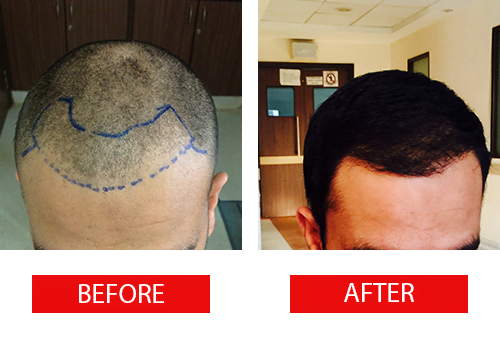Overview:

Overview:
Hair transplantation is done to increase hair in an area of your head. The hair may be light or non-existent (baldness). This is done by taking hair from the hairy and thick parts of the scalp, or another part of the body, and then grafting it to a part of the scalp where the hair is thinning or balding.
Worldwide, about 60% of men and 50% of women suffer from some form of hair loss.
Moreover, hair transplantation is another way to restore hair. The first scalp hair transplant was performed in 1939 in Japan. In the following decades, doctors developed the delivery technology.
It is the transplantation of a large tuft of hair. It is necessary to know everything related to the process of hair transplantation and what is related to it.
In this article, we discuss everything that you need to know about hair transplantation.
Is hair transplant feasible:
Usually, hair transplantation is more successful than hair restoration products. which does not require a medical prescription. But there are some factors that must be taken into account in the process of hair transplantation and what is related to it:
First: From anywhere 10 to 80% of the transplanted hair will grow completely within three to four months approximately.
Second: the transplanted hair becomes thin over time, like normal hair.
Third: People with dormant hair follicles (bags that contain hair under the skin that does not grow) may have less effective hair transplantation, but a 2016 study suggests that plasma treatment can help up to 75% or more of the transplanted hair grow. fully.
Hair transplantation is not suitable for everyone. It is mainly used to restore hair if you suffer from baldness or thinning naturally, or you have lost hair due to injury.
We can say that hair transplantation is not effective in treating people who suffer from:
1. The spread of baldness and lightness.
2. Hair loss due to chemotherapy or other medications.
3. Thick scalp scars from injuries.
What is the cost of hair transplant ?
The final costs may depend on:
First: the duration of the transplant procedure.
Second: the availability of surgeons in your area.
Third: The experience of the surgeon.
Fourth: The chosen surgical technique.
How does hair transplant work:
How is the hair transplant process and what are the issues related to it: Simply, the hair transplant process is by taking a part of your hair, and then transferring it to an area with light hair or no hair. It is usually taken from the back of your head, then it can also be taken from other parts of the body.
Before starting the transplant process, the surgeon will sterilize the area from which the hair will be removed. Then he anesthetizes her with a local anesthetic. You can also order other anesthesia methods in order to stay asleep during the procedure. The surgeon then uses one of the two methods of hair transplantation, FUT or FUE.
First: Hair follicle transplantation alone (FUT):
FUT is sometimes known as Follicular Unit Segmentation (FUSS). To perform the FUT procedure, the surgeon follows these steps:
1. Using a scalpel, the surgeon removes a piece of the scalp, usually from the back of your head. The strip is usually 6-10 inches but can extend from ear to ear
2. They close the area where it was removed Scalp stitches.
3. The surgeon and his assistants separate a strip of scalp into smaller pieces using a scalpel. Then they break the piece into up to 2,000 smaller parts, called grafts. These grafts may contain only one hair each.
4. Using a needle or blade, the surgeon makes small holes in the scalp where the hair is transplanted.
5. The surgeon inserts the hair from the removed scalp into the puncture holes. This step is called grafting
. 6. Then they cover the surgical sites with bandages or gauze.
The exact number of grafts you receive depends on:
First : your hair type.
Second : the size of the implant site.
Third : hair quality (including thickness).
Fourth : hair color.
Second: FUE technique:
In this procedure, the surgeon uses the following steps to perform the FUE operation:
First : They shave the hair from the back of your head.
Second : Then the surgeon takes individual follicles from the skin of the scalp. After that, you will see small marks where each follicle has been removed.
Third : After that, the surgeon makes small holes in your scalp. The hair follicles are then grafted into the holes. The same is the case with the FUT procedure.
Fourth : Then they cover the surgical site with bandages or gauze.

recovery:
Both FUT and FUE can take several hours to several days to complete. This depends on the amount of work the surgeon does, and you will likely go home the same day as the procedure.
And once the surgery is finished. The surgeon carefully removes the dressings. It is possible that the operation area may swell, so the surgeon may inject triamcinolone into the operation area to keep swelling.
And it is possible that you will feel pain and aches at the implantation site as well as in the area from which the hair was taken. Then, in the next few days, the surgeon may prescribe you:
° Pain medications such as ibuprofen.
° Antibiotics to prevent infections.
Anti-inflammatories, such as oral steroids, to reduce swelling.
° Medicines such as finasteride (Propecia) and ominoxidil (Rogaine) to help stimulate hair growth.
Here are some of the following tips for hair transplantation:
1. Wait a few days after surgery to wash your hair. Then you should use only mild shampoo for the first few weeks.
2. You must be able to return to work or normal activities within approximately 3 days.
3. You should not press the brush or comb the new follicles for about 3 weeks.
4. Do not wear any hats or shirts and jackets until your doctor says that it is okay.
5. You should not exercise for about a week.
Then you don’t have to worry if some hair falls out, this is a possible part of the process. Then be aware that the transplanted hair may not grow much. Or does not match the lineage of hair surrounding it for a few months.
Among the side effects of hair transplantation:
The most common side effect is scarring, and this cannot be avoided with any procedure.
Other possible side effects include the following:
1- Infections.
2- Crust or pus around the surgical sites.
3- Scalp pain, itching and swelling.
4- Inflammation of the hair follicles (folliculitis).
5- Bleeding.
6- Loss of feeling around the surgical sites.
7- Areas of hair that we see, may not match the surrounding hair or be noticeably thinner.
8- Hair loss may continue if your hair is thin or still bald. It could be minoxidil
Propecia also has side effects, such as:
First: an irritated scalp.
Second: dizziness.
Third: chest pain.
Fourth: headache.
Fifth: irregular heart rate.
Finally, we hope that this article of ours has achieved its goals by knowing everything related to the process of hair transplantation and what is related to it.



